
The line outside the No Cost Grocery program formed three hours before the doors opened at Food to Power, a nonprofit in Colorado Springs that hosts fresh food pop-ups twice a week.
People of all ages, some with families, waited to shop from the colorful bins of fresh produce – bright red and orange peppers, deep green chard and lettuce and light green tomatillos with their papery husks. Other bins overflowed with food from Sprouts and Trader Joe’s, some of it slightly blemished or no longer suitable for sale. Packages of meat and ready-to-eat meals sat on another table.
Shoppers reached up to shelves on tall racks to choose canned vegetables, loaves of bread, packages of tortillas and more. Household goods such as toilet paper, shampoo and sunscreen were available on another table. A refrigerator offered milk, eggs and other dairy foods. More than a dozen volunteers cleaned, weighed and packaged food and answered shoppers’ questions.
“Does anyone need dog food?” one volunteer called out.
Andrea Torres tries to make it to the No Cost Grocery program as often as she can after her overnight shift at a local retail distribution warehouse. When she was a Pikes Peak State College student, she volunteered at Food to Power. Now, she shops at the No Cost Grocery to help stretch her salary. On this day, she filled two bags with salad, bread, frozen meats, paper towels, fresh fruit and eggs.
“It means a lot,” she said of the program. “And it helps a lot of people.”
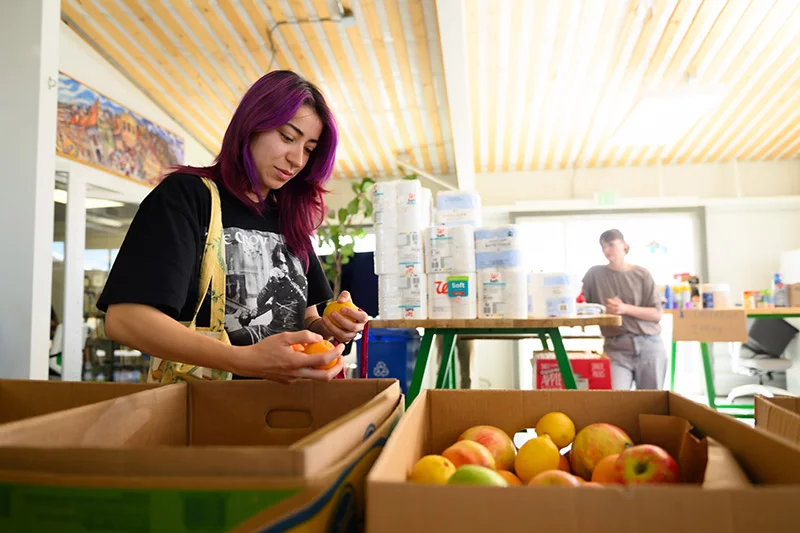
Nearly 200 people attended the event on a recent Tuesday. It’s a “no-questions-asked” chance to get food. Shoppers do not have to meet eligibility requirements or fill out paperwork. They need only sign up on the paper form posted at 9 a.m.
The No Cost Grocery program is just one of several ways that Food to Power provides food to people who need it – 35,000 people last year alone.
Food to Power’s executive director, Patience Kabwasa, said she’s seeing an unprecedented need for food assistance. As grocery prices have risen and government funding for food assistance has declined, hunger is on the rise.
“This is a moment in time when people need food exponentially more than they ever have in recent history,” Kabwasa said.
During challenging times, Kabwasa, her small staff and dozens of volunteers are doing all they can to bring fresh, healthy food to people in need.
“We believe fresh food is a human right,” Kabwasa said.
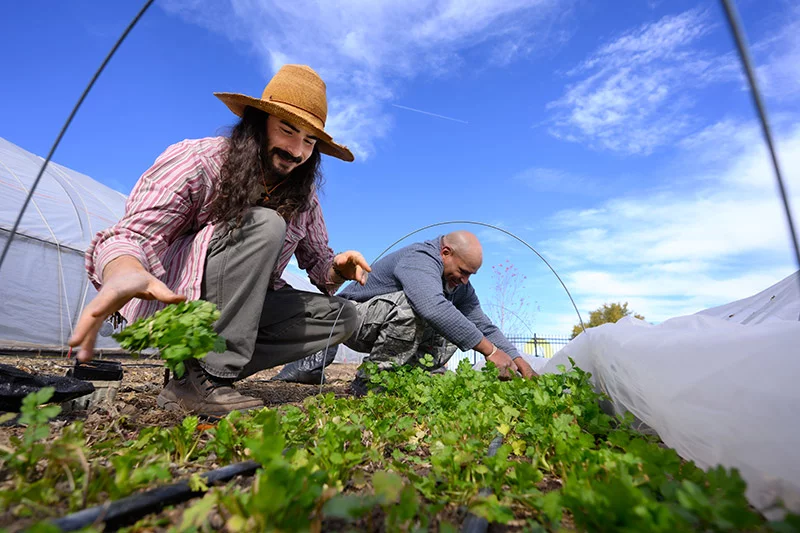
From food rescue to a thriving food ecosystem, Food to Power expands reach
A group of volunteers started what would become Food to Power in 2013, working with local stores to collect healthy food not fit for sale – a bruised apple, for example – to provide to people who do not have ready access to food.
Kabwasa started volunteering in 2015, then applied for a job in 2016. She became executive director in 2020, when the COVID-19 pandemic caused a surge in the need for food assistance as schools closed and people lost jobs.
She and her team changed the organization’s name a few years ago and broadened their scope beyond the flagship food rescue program to work toward creating a “thriving, equitable food system” in Colorado Springs.
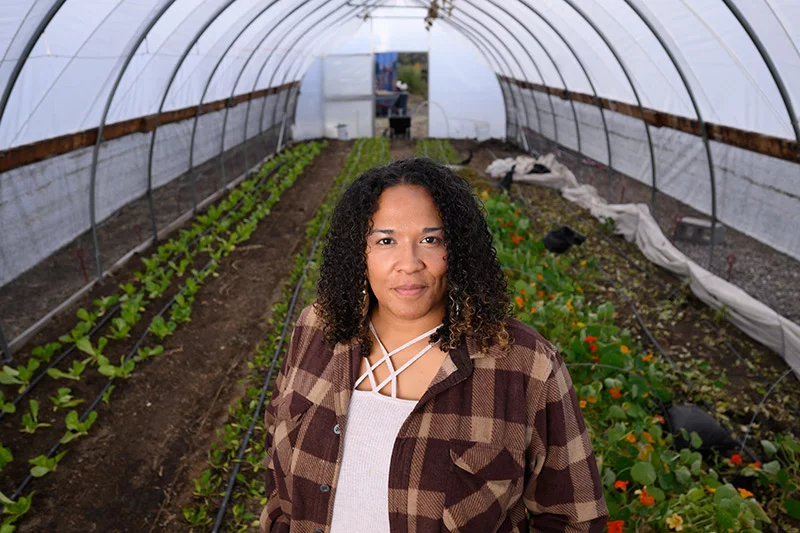
The systemic issues that cause hunger and food insecurity – rising costs of groceries and housing, job losses, lack of transportation, shuttered grocery stores and cuts to federal assistance programs – have become more pronounced, Kabwasa said.
She and her team now focus on three priorities: food access, food education and food production.
In 2022, Food to Power opened its Hillside Hub atop a bluff in the Hillside neighborhood, a lower-income area southeast of downtown Colorado Springs. The hub is a hive of activity, with a quarter-acre farm, smaller gardens, greenhouses and a composting operation. Since 2019, Food to Power has saved 2.6 million pounds of fresh produce from the landfill. The headquarters building houses offices and serves as a meeting and event space. Large colorful murals adorn walls and outbuildings to pay homage to the neighborhood’s history. This is where No Cost Grocery happens on Tuesdays and Thursdays.
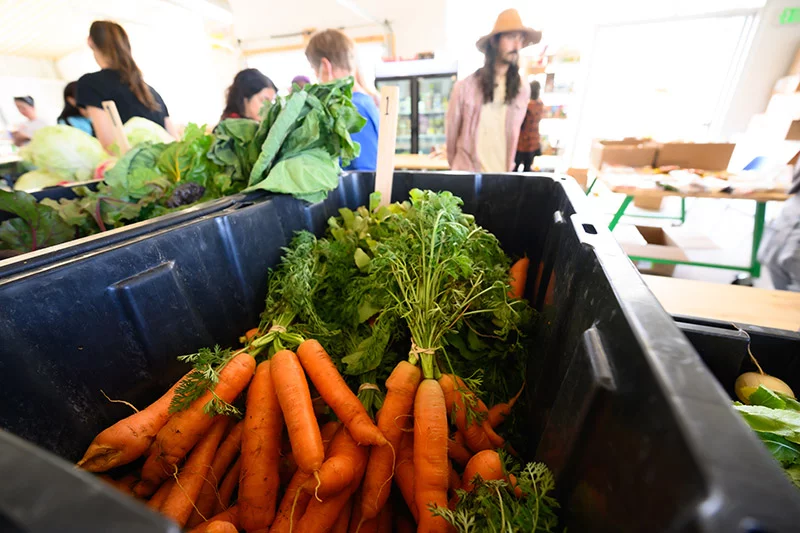
“Having a fresh food ecosystem that also becomes an economic driver in the community and makes food available is so important,” Kabwasa said.
Shoppers delight in the choices at No Cost Grocery. ‘It’s actual fresh food.’
Shane Nelson is the farm director at Food to Power. This year, he and his team grew 25 types of vegetables – tomatoes, peppers, cucumbers, squash, lettuce, spinach, rhubarb, and kale, and more, plus a variety of herbs. The farm produced more than 10,000 pounds of food last year alone. A few crops are still in the ground this fall. Nelson will begin growing next year’s plants in the nearby greenhouse in the new year.
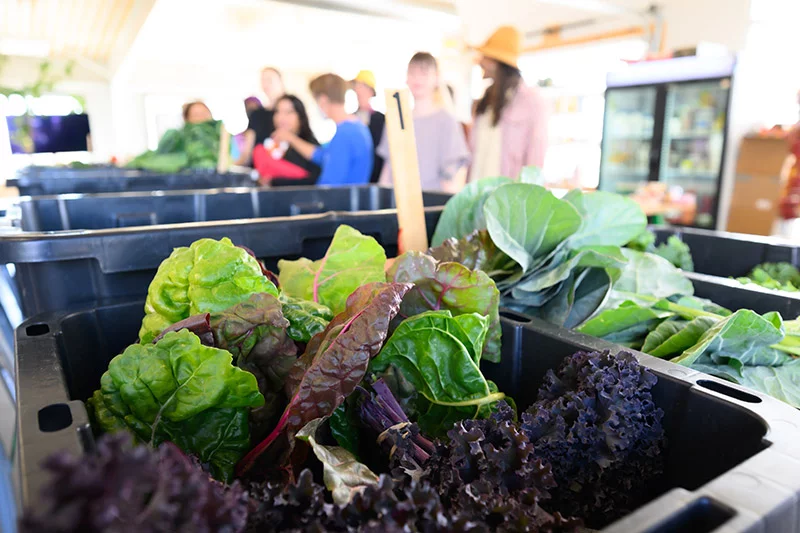
For the recent No Cost Grocery event, Nelson harvested chard, tomatillos, cherry tomatoes, turnips, radishes, carrots, beets, onions, dill and cilantro. In addition to their own No Cost Grocery, Food to Power staff provide logistical support to other similar programs in town.
Alyssa Hostetler and her partner Cameron Marquez shopped the No Cost Grocery after learning that they wouldn’t receive their November Supplemental Nutrition Assistance Program, or SNAP, benefits. It was their second time visiting the Hillside Hub.

“This is helping out a lot,” Hostetler said as they loaded meat, salad, eggs, strawberries and apples into the back of their van.
“It’s not just canned food,” she said. “It’s actual fresh food. It was a really cool experience.”
Food to Power’s other programs include No Cost Delivery, which delivers fresh groceries weekly to older people and those who can’t get to a food site; and Community Fridge, in partnership with the SE Food Coalition, which maintains a public refrigerator that stocks fresh, perishable food for anyone. The organization has eight employees and a $1.2 million annual budget.
In El Paso County, almost 10% of the population, or nearly 70,000 people, are considered “food insecure,” according to Feeding America, a nationwide network of food banks, food pantries and meal programs. Food insecurity refers to a person’s inability to get food due to a lack of money, transportation, nearby grocery stores or other essential resources, according to Feeding America.

Challenges mount for food assistance programs in Colorado Springs
The demand for Food to Power’s programs more than doubled from 2023 to 2024, with 21,000 additional people seeking help getting food. Kabwasa predicts an even greater need as 2025 draws to a close.
She and her team have faced a host of challenges. Earlier this year, she learned that federal officials canceled crucial grants, which they hoped to receive. One was a multimillion-dollar grant from the Environmental Protection Agency that would have enabled Food to Power to expand its composting enterprise, which generates revenue. Proposed federal budgets also may cut spending on food assistance programs by tightening eligibility standards and decreasing benefits. A weeks-long federal government shutdown meant most federal workers didn’t get paid, and November SNAP benefits (Supplemental Nutrition Assistance Programs) were on hold.
During tough times, Kabwasa and her colleagues are doing all they can.

“We are going to feed people we can with the resources we have,” she said. “Will we be able to alleviate hunger? Not alone.”
But there are two bright spots for Kabwasa and Food to Power. One is the passage of two November ballot measures in Colorado that secure funding for the Healthy School Meals for All program. Additional taxes on higher-income taxpayers will ensure breakfast and lunch for all public-school students.
Kabwasa also recently learned that UCHealth leaders approved a $30,000 grant to Food to Power. The funding for her organization is part of UCHealth’s $775,000 in grant funding to 76 organizations across Colorado. The grants help communities overcome barriers and create pathways to better health and are part of UCHealth’s commitment to improving lives in the communities it serves. Last year, UCHealth provided $1.3 billion in community benefits, including $568 million in uncompensated care.
Kabwasa said access to nutritious food helps people stay healthier. She praises UCHealth leaders for supporting preventive health and called the $30,000 grant “a lifeline.”
“It’s going to help us continue to feed families with fresh food in a time when we are experiencing unprecedented need,” she said.
